Top AI-Powered E-commerce Chatbots: Examples, Platforms, and Benefits of Conversational AI [2025]
Boost e-commerce with AI chatbots for customer engagement.
Boost e-commerce with AI chatbots for customer engagement.
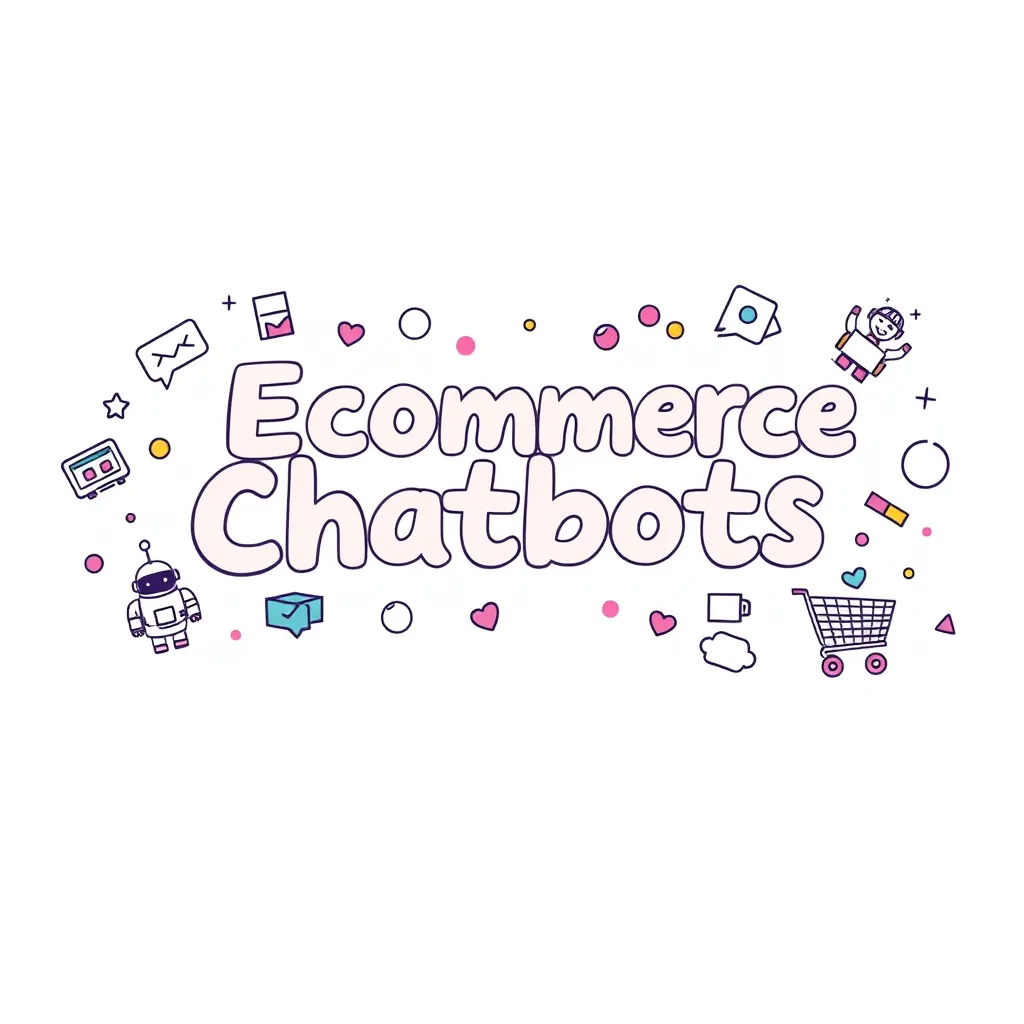
In today’s fast-paced e-commerce world, AI chatbots are transforming customer interactions with instant support and personalized experiences. Paired with robust tools like OneCart for streamlined backend operations, businesses can deliver seamless shopping journeys while boosting efficiency and sales.
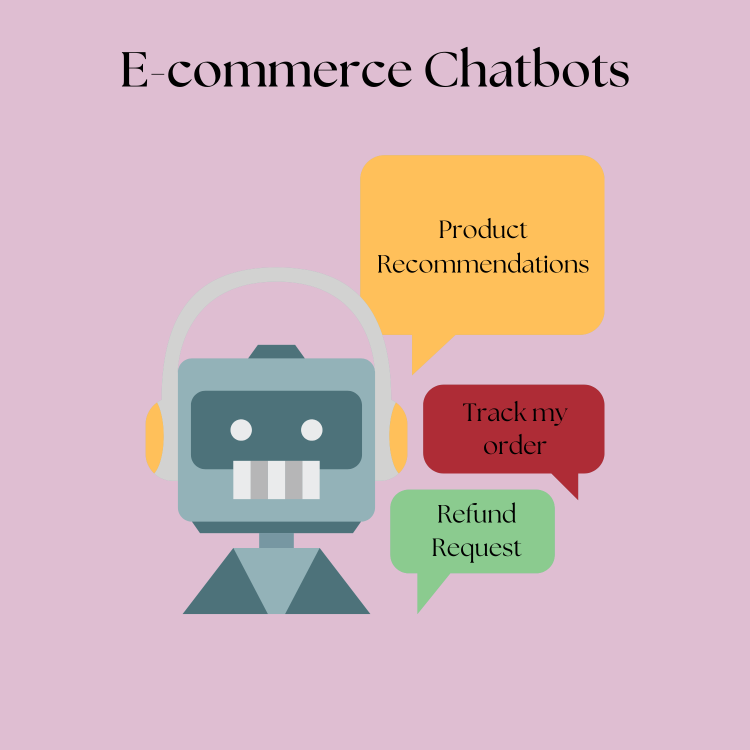
AI-powered e-commerce chatbots are advanced tools that leverage artificial intelligence to interact with customers in real-time, simulating human-like conversations. These chatbots are designed to assist with a variety of tasks, such as answering customer queries, providing product recommendations, and facilitating purchases. By integrating seamlessly into platforms like websites, mobile apps, and social media, they offer a versatile solution for businesses to enhance customer engagement and streamline operations.
At their core, these chatbots rely on conversational AI, a technology that combines natural language processing (NLP), machine learning, and data analysis to understand and respond to customer inquiries. Unlike traditional customer service tools, which often require human intervention, AI chatbots operate autonomously and are capable of handling multiple interactions simultaneously. This not only improves response times but also reduces the need for extensive staffing.
In the context of e-commerce, chatbots go beyond basic functionality. They analyze user data to provide personalized experiences, such as recommending products based on browsing history or assisting customers during checkout. For example, a customer browsing an online clothing store may receive tailored suggestions for accessories that complement their chosen outfit. Such interactions not only enhance the shopping experience but also encourage upselling and cross-selling.
AI-powered chatbots offer transformative advantages for e-commerce businesses, reshaping how companies engage with customers and drive sales. From improving support quality to streamlining operations, these tools deliver measurable value in several key areas.
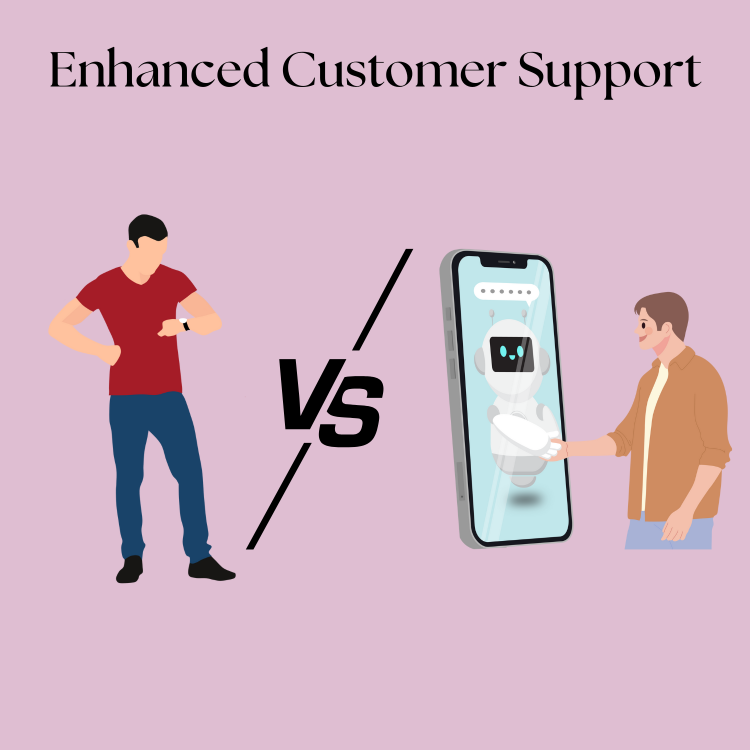
AI chatbots provide round-the-clock customer service, ensuring queries are resolved promptly without human intervention. They handle common inquiries such as order tracking, return policies, and product availability, reducing wait times and improving the overall customer experience.
Example: A customer visiting an online electronics store at midnight can inquire about laptop specifications and receive detailed answers instantly, instead of waiting for an agent during business hours.
Key Advantage: Faster resolution of queries builds customer trust and satisfaction.
To learn more about customer loyalty, click here.

Chatbots play a crucial role in reducing abandoned carts and increasing conversion rates. By proactively engaging customers during the browsing and checkout processes, they guide hesitant buyers toward completing their purchases. Additionally, they provide personalized recommendations to upsell or cross-sell products.
Example: A customer purchasing a smartphone might be offered accessories like screen protectors or cases, increasing the total order value.
Key Advantage: Higher average order value and reduced cart abandonment rates.
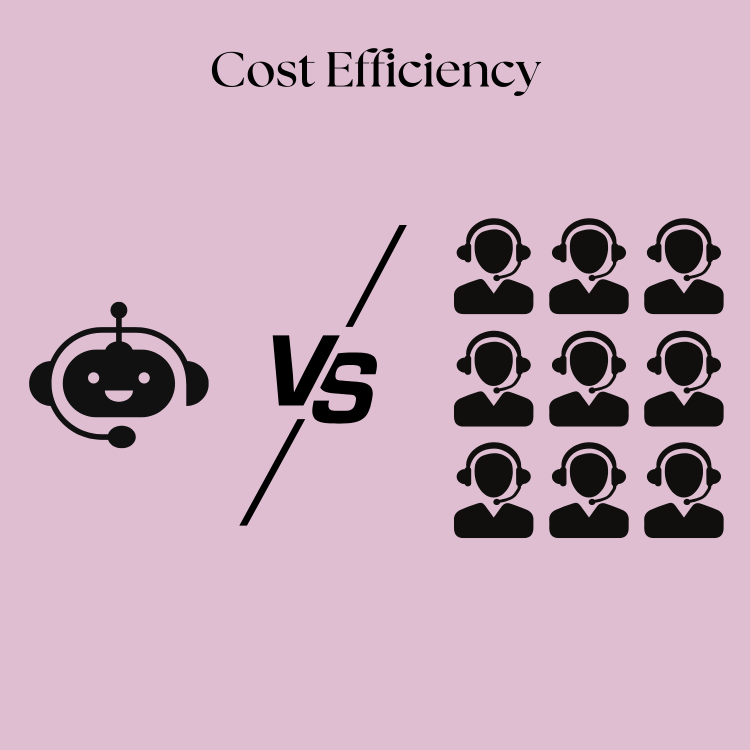
By automating repetitive tasks, chatbots reduce the need for a large customer support team. Businesses can scale customer interactions during peak times, such as holiday sales, without incurring additional labor costs.
Example: Instead of hiring temporary support staff for Black Friday, a chatbot can handle thousands of queries simultaneously.
Key Advantage: Significant savings in staffing costs while maintaining high-quality service.
To learn more about managing inventory during peak times, read our article here.
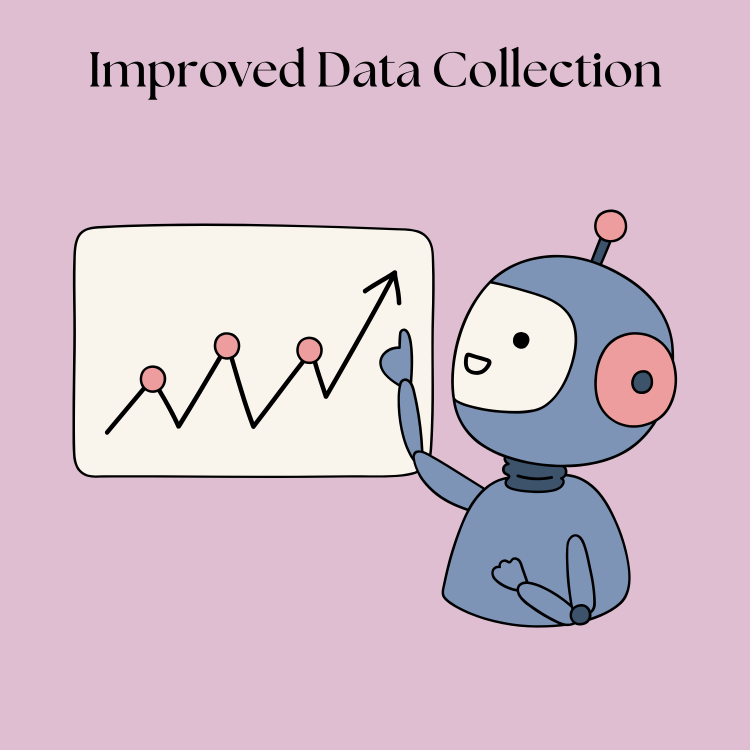
Chatbots gather valuable insights into customer preferences, buying habits, and pain points. This data can be analyzed to refine marketing strategies, improve products, and create more targeted campaigns.
Example: An e-commerce platform offering fashion items may identify a trend of customers frequently asking about sustainable materials, prompting the business to highlight eco-friendly options in future promotions.
Key Advantage: Data-driven decision-making for product and marketing improvements.
To understand KPI metrics in detail, feel free to explore here.
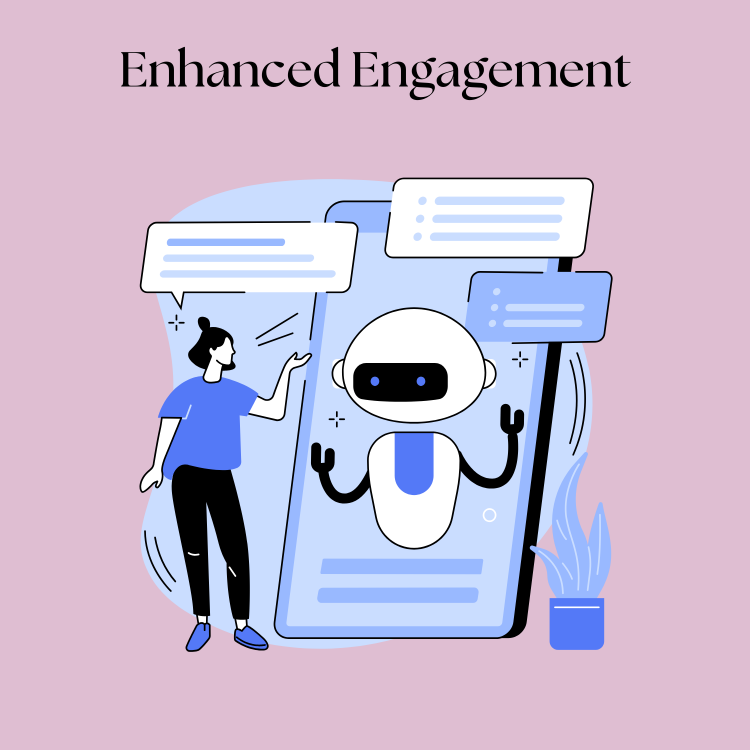
Unlike static interfaces, chatbots create interactive, dynamic shopping experiences. By incorporating conversational elements like quizzes, polls, and live product demos, they keep customers engaged and invested in the shopping journey.
Example: A chatbot on a beauty website might ask users about their skin type and recommend specific skincare products, mimicking the experience of an in-store consultation.
Key Advantage: Increased time spent on the site and higher chances of completing a purchase.
Botpress is an open-source platform designed for developers who want complete control over their chatbot functionality. It supports natural language understanding (NLU) and provides tools to create highly customized chatbot workflows.
Key Features:
Best For: Businesses with in-house development teams that require tailored chatbot solutions.
Tidio is an all-in-one platform that combines live chat, chatbot, and email marketing features. Its user-friendly interface makes it an excellent choice for small to medium-sized e-commerce stores.
Key Features:
Best For: Small businesses seeking a plug-and-play chatbot solution.
Certainly focuses on creating chatbots that deliver personalized shopping experiences. It leverages AI to guide customers through their buying journey and is particularly effective in reducing cart abandonment.
Key Features:
Best For: E-commerce businesses looking to enhance customer engagement and boost conversions.
Zoho SalesIQ offers a chatbot solution integrated with its broader suite of sales and CRM tools. This platform is ideal for businesses that want a chatbot capable of capturing leads and nurturing them through the sales funnel.
Key Features:
Best For: Businesses already using Zoho products or those focused on lead generation.
Tars specializes in creating chatbots for conversion rate optimization. Its visual chatbot builder allows businesses to create intuitive workflows without coding knowledge.
Key Features:
Best For: Businesses targeting specific customer segments in multiple languages.
| Platform | Key Feature | Best For |
|---|---|---|
| Botpress | Open-source flexibility | Custom chatbot solutions |
| Tidio | Plug-and-play templates | Small to medium-sized businesses |
| Certainly | AI-driven product recommendations | Enhancing customer engagement |
| Zoho SalesIQ | CRM integration for lead nurturing | Businesses using Zoho CRM |
| Tars | Drag-and-drop chatbot builder | Multilingual customer engagement |
When selecting a chatbot platform, consider the following factors:
AI-powered chatbots have proven to be game-changers for businesses across industries. Below are real-world examples of e-commerce brands leveraging chatbots to enhance customer experiences, boost sales, and streamline operations.
Sephora, a global beauty retailer, uses chatbots to offer personalized recommendations based on customer preferences. Through platforms like Facebook Messenger, their chatbot assists users in finding the right products by asking questions about their skin type, makeup preferences, and desired outcomes.
Key Benefits:
Results: Sephora has reported increased customer satisfaction and a significant boost in sales from chatbot-assisted purchases.
H&M’s chatbot on platforms like Kik and their website guides customers through product discovery. It engages users by asking about their fashion preferences and then curates a personalized shopping experience.
Key Benefits:
Results: H&M has seen a rise in mobile conversions and higher average cart values.
Domino’s chatbot, called “Dom,” makes pizza ordering as easy as sending a text. Integrated into platforms like Facebook Messenger, customers can browse the menu, place orders, and track deliveries—all within the chat interface.
Key Benefits:
Results: Domino’s has reported significant growth in chatbot-driven orders and improved customer convenience.
While AI chatbots have transformed the e-commerce landscape, they are not without challenges. Understanding these limitations is crucial for businesses to deploy chatbots effectively and set realistic expectations.
AI chatbots excel at answering routine questions, but they may struggle with more complex, nuanced issues. Customers seeking detailed product comparisons or tailored solutions may become frustrated if the chatbot cannot provide satisfactory answers.
Example: A customer asking about compatibility between multiple electronics products may need input from a human agent if the chatbot lacks the required database depth.
Solution: Implement hybrid systems where chatbots handle simple queries, and human agents take over when needed.
Chatbots are great at processing data but lack the emotional intelligence required to empathize with frustrated or confused customers. This limitation can lead to dissatisfaction, particularly in situations where customers expect empathy and reassurance.
Example: A customer expressing frustration over a delayed order may feel more supported by a human agent who can convey understanding.
Solution: Use chatbots to de-escalate issues by gathering initial details and routing the conversation to a human agent when necessary.
Businesses that over-rely on chatbots risk alienating customers who prefer human interaction. Chatbots may create an impersonal experience if not designed with conversational finesse.
Example: A chatbot that continuously fails to understand a query could frustrate the user, leading to abandonment.
Solution: Allow customers to request human assistance at any point during the interaction.
AI chatbots collect vast amounts of data to improve personalization and functionality. However, if not properly secured, this data can be vulnerable to breaches, potentially harming customer trust.
Example: A chatbot integrated with an e-commerce platform that stores credit card details must adhere to strict data protection laws like GDPR or CCPA.
Solution: Invest in robust encryption, regular audits, and compliance with data privacy regulations.
While chatbots can reduce long-term operational costs, their initial setup requires investment in technology, training, and integration with existing systems. For smaller businesses, this can pose a financial challenge.
Example: A company that lacks in-house technical expertise may need to hire developers to deploy and train a chatbot effectively.
Solution: Choose chatbot platforms that offer pre-built templates and straightforward integration to reduce setup complexity.
AI chatbots require ongoing updates to remain effective. Changes in product catalogs, customer preferences, or market trends necessitate regular maintenance, which can strain resources.
Example: A chatbot trained on outdated product data may recommend items that are no longer available.
Solution: Integrate the chatbot with real-time data feeds to ensure recommendations and responses stay relevant.
An e-commerce chatbot is an AI-powered tool designed to assist customers by simulating human-like conversations. It helps answer queries, provide product recommendations, guide users through the purchasing process, and handle post-sale support.
Chatbots improve customer experience by:
Some leading platforms include:
Yes, most advanced chatbot platforms offer multilingual support, allowing businesses to cater to diverse customer bases. However, the quality of support depends on the chatbot’s language database and training.
Chatbots typically integrate with platforms like Shopify, WooCommerce, Magento, and social media platforms via APIs or plug-ins. This enables them to access real-time inventory, process orders, and assist customers seamlessly.
Some challenges include:
Key metrics for evaluating chatbot performance include:
AI-powered chatbots are transforming the e-commerce landscape by delivering personalized customer experiences, streamlining operations, and driving sales. From providing 24/7 support to boosting conversions through tailored recommendations, chatbots offer unmatched efficiency and scalability. While challenges such as handling complex queries or maintaining emotional intelligence exist, careful selection of the right platform and strategic implementation can mitigate these limitations. By embracing advancements like voice integration, hyper-personalization, and multilingual capabilities, businesses can stay ahead in a competitive market. With tools like Tidio, Botpress, or Zoho SalesIQ, and a balance of automation and human support, chatbots are an indispensable asset for modern e-commerce businesses aiming to enhance customer satisfaction and achieve sustainable growth.
While chatbots excel at enhancing customer engagement, tools like OneCart take care of the backend operations that keep your business running smoothly. By integrating OneCart, you can centralize order processing, synchronize inventory across platforms, and generate detailed sales reports—all while your chatbot focuses on customer interactions.
Ready to optimize your e-commerce business? Start your free trial with OneCart today and take your efficiency to the next level!
Automate & Scale Your Online Business with OneCart
Start a Free TrialUsed by hundreds of merchants in Singapore & Southeast Asia